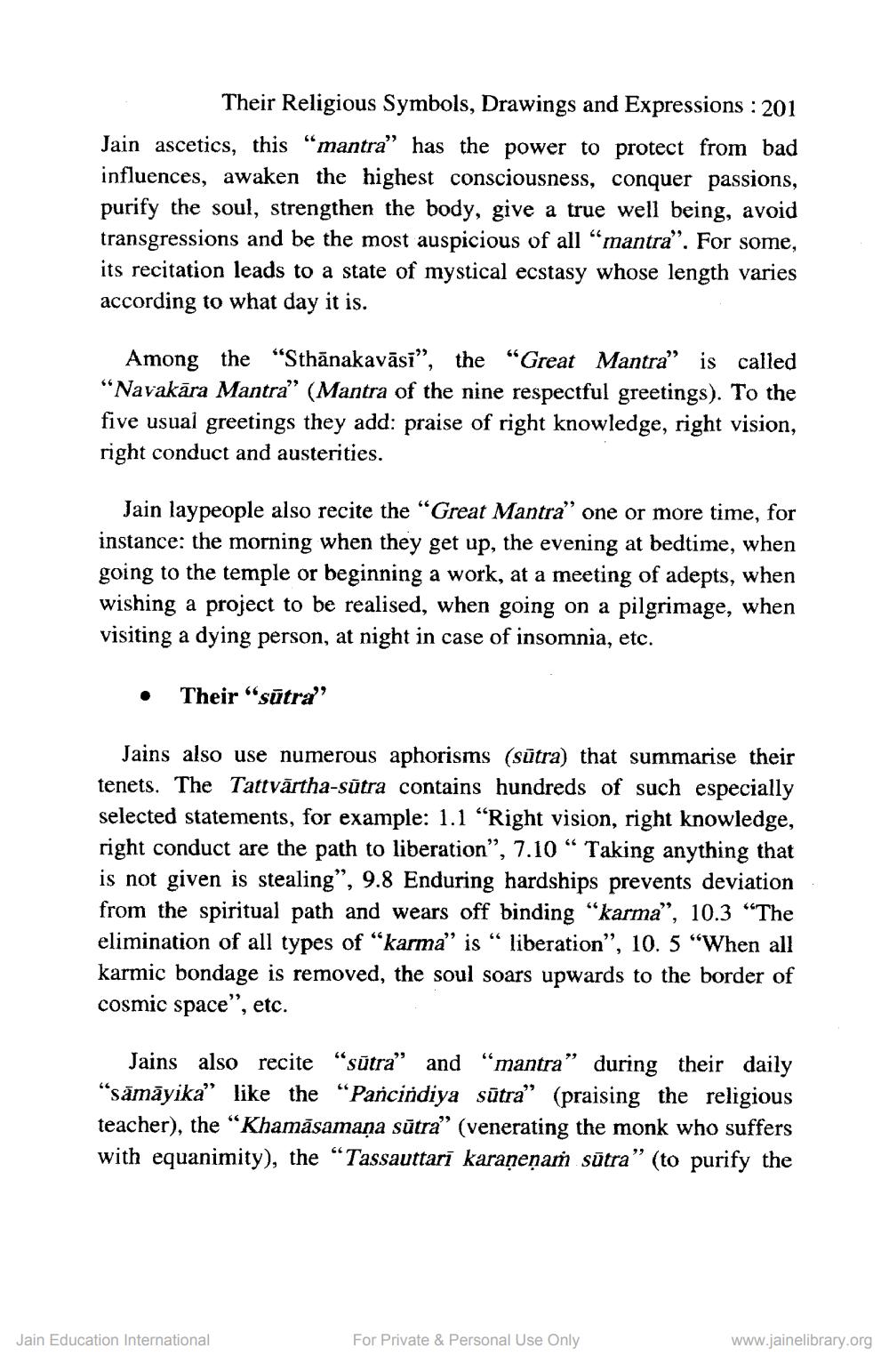________________
Their Religious Symbols, Drawings and Expressions : 201 Jain ascetics, this “mantra” has the power to protect from bad influences, awaken the highest consciousness, conquer passions, purify the soul, strengthen the body, give a true well being, avoid transgressions and be the most auspicious of all “mantra”. For some, its recitation leads to a state of mystical ecstasy whose length varies according to what day it is.
Among the “Sthānakavāsi”, the “Great Mantra” is called “Navakāra Mantra” (Mantra of the nine respectful greetings). To the five usual greetings they add: praise of right knowledge, right vision, right conduct and austerities.
Jain laypeople also recite the “Great Mantra" one or more time, for instance: the morning when they get up, the evening at bedtime, when going to the temple or beginning a work, at a meeting of adepts, when wishing a project to be realised, when going on a pilgrimage, when visiting a dying person, at night in case of insomnia, etc.
•
Their "sūtra”
Jains also use numerous aphorisms (sūtra) that summarise their tenets. The Tattvārtha-sūtra contains hundreds of such especially selected statements, for example: 1.1 “Right vision, right knowledge, right conduct are the path to liberation", 7.10“ Taking anything that is not given is stealing", 9.8 Enduring hardships prevents deviation from the spiritual path and wears off binding “karma”, 10.3 "The elimination of all types of “karma” is “ liberation”, 10. 5 “When all karmic bondage is removed, the soul soars upwards to the border of cosmic space”, etc.
Jains also recite “sütra” and “mantra" during their daily "sāmāyika” like the “Pancindiya sūtra” (praising the religious teacher), the “Khamāsamaņa sūtra" (venerating the monk who suffers with equanimity), the “Tassauttarī karaņeņaṁ sūtra” (to purify the
Jain Education International
For Private & Personal Use Only
www.jainelibrary.org




